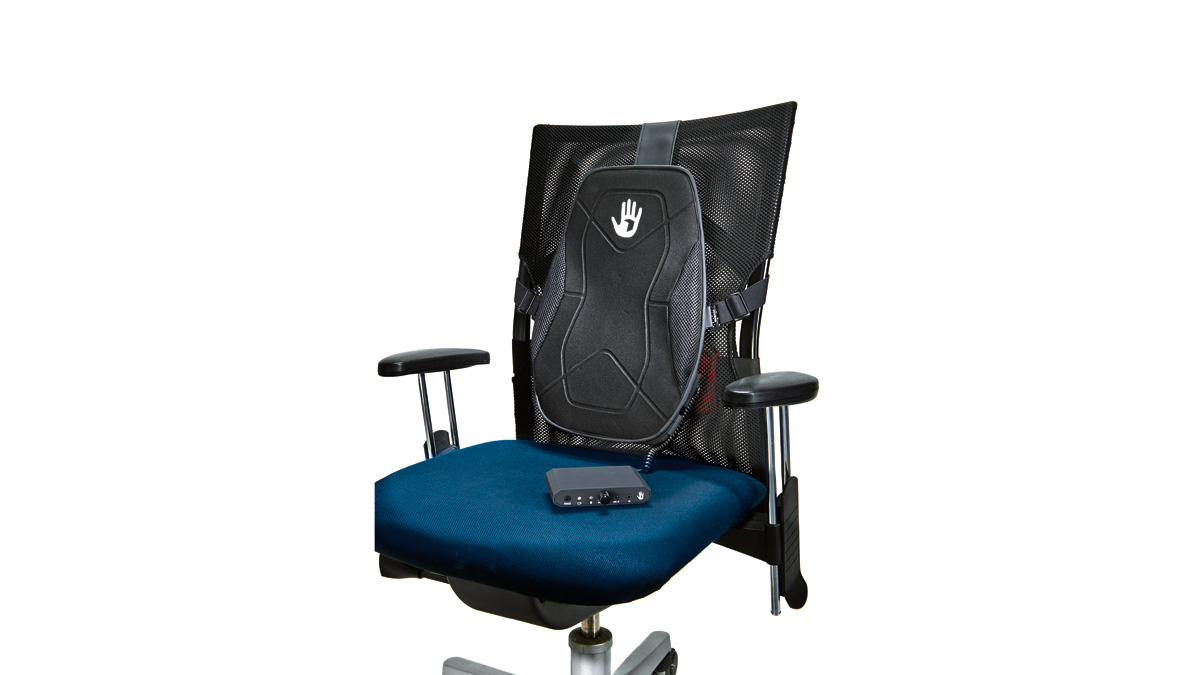MusicRadar Verdict
A unique and genuinely useful monitoring tool - a must-try for Dance producers.
Pros
- +
A revolutionary tool.
Cons
- -
Not the most refined monitoring system.
MusicRadar's got your back
SubPac is a tactile bass monitoring system, which - in contrast to a standard sub, which works by creating vibrations in the air that are picked up by the ear - transmits 'sound' entirely via physical contact, using transducers to transmit low-frequency information directly into the listener's body.
It is currently available in two forms - the M1, a backpack device for portable use and DJing, and the S2, the chair- mounted version we have on test here.
The S2 hardware itself comes in the form of a sleek, black pad, roughly half a metre high and around 5cm thick. It's slightly contoured and fairly comfortable to lean back against, and comes with an adjustable strap for fastening to a chair.
Attached to the pad is a control box with 3.5mm jack headphone out and line in ports (although it can also stream audio via Bluetooth), power socket, on/off switch, battery indicator and a central Intensity dial for setting the SubPac level. The control unit contains a rechargeable battery which apparently has a six hour life per charge.
Feel the bass
In use the SubPac is a fascinating and unique tool. The physical way it translates bass is equivalent to hearing music on a powerful club sound system and - particularly for Dance music producers - the ability to replicate this effect at low volume is something of a revelation.
With your back in full contact with the unit it really helps to add clarity to the lower frequencies that are generally lost when working on headphones or a modest monitoring set-up. After getting used to the effect for a while, we began to find it very useful for applications like adjusting the interplay between kicks and basslines, or identifying messy sub frequencies that we'd usually need to rely on a spectral analyser to identify.
There are a few caveats to using the SubPac as a monitoring tool. For one thing, it's only really designed to be used with headphones. While it is possible to use the device with the control box's output connected to a set of nearfield monitors, there's no functionality for compensating for delays or phase issues that might arise from the combination of using room-reliant monitors and the entirely tactile SubPac. It's still entirely usable in this state, but it's not the most refined monitoring system.
Also, as a studio tool at least, the SubPac shouldn't be thought of as a plug-and-play device. As with any new monitoring set-up, it requires a decent amount of cross-referencing and getting used to before you can really trust it as a mixing tool.
Use a track you're familiar with hearing via a club system or decent sub in order to calibrate the SubPac. The easily accessible Intensity control is a little misleading for studio use too; at first it's tempting to use it to 'dial in' bass or cut back the SubPac's effects if it's getting a little tiring, but to do so is rather counter-intuitive for mixing purposes.
The Intensity is more of a 'set once and leave' parameter, used for levelling the SubPac to suit your own body, room and monitoring system.
In terms of connections and controls, there are a few features we'd like to see added to aid studio use, but we're told a 'pro' version is actually in the works. None of this detracts from the fact that it is a useful and somewhat revolutionary tool.
It's not the be-all- and-end-all of bass monitoring but, like a good pair of headphones, we can see it becoming an integral part of the mixing process for many producers.
I'm the Managing Editor of Music Technology at MusicRadar and former Editor-in-Chief of Future Music, Computer Music and Electronic Musician. I've been messing around with music tech in various forms for over two decades. I've also spent the last 10 years forgetting how to play guitar. Find me in the chillout room at raves complaining that it's past my bedtime.
“A synthesizer that is both easy to use and fun to play whilst maintaining a decent degree of programming depth and flexibility”: PWM Mantis review
“I feel like that song had everything we needed to come back with”: Bring Me The Horizon’s Lee Malia on Shadow Moses, its riff and the secrets behind its tone, and why it was the right anthem at the right time
“I said, ‘Are we sure we can write a song about death?’”: The story of Mike + The Mechanics' classic No.1 The Living Years










